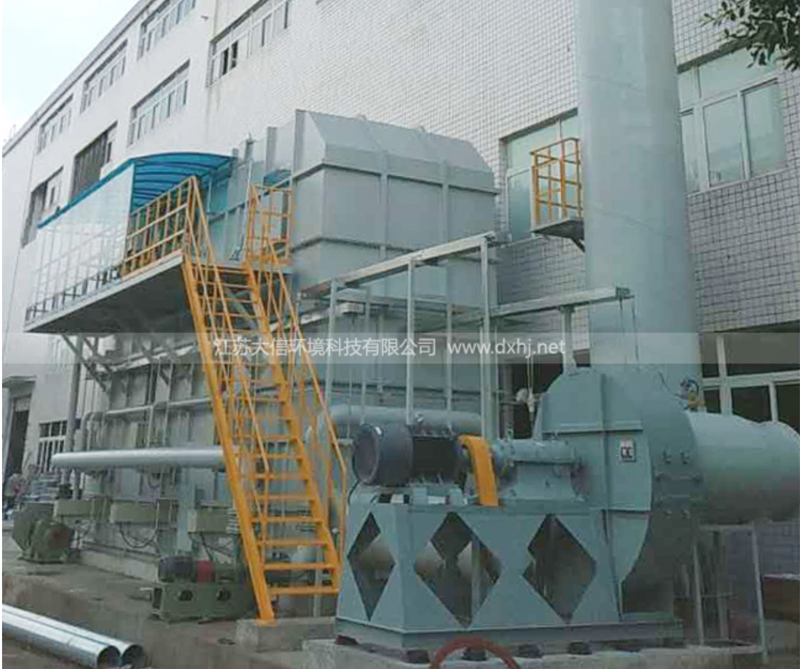A method for manufacturing a new type of radioactive waste pyrolysis incinerator
Release time:
2021-08-29
Military industry, scientific research, experiments, and nuclear power plants generate a large amount of radioactive waste during their operation and maintenance processes. Incineration, as one of the technologies to reduce the volume of radioactive waste, is very suitable for handling these low-level radioactive solid wastes. It can not only significantly reduce the volume but also convert inorganic waste, which is beneficial for disposal. However, this incineration furnace mechanism cannot avoid tar and smoke odors, making it unsuitable for burning waste containing synthetic materials.
Military, scientific research, experimental, nuclear power plants, and other nuclear facilities generate a large amount of radioactive waste during their operation and maintenance. Incineration, as one of the technologies to reduce the volume of radioactive waste, is very suitable for handling these low-level radioactive solid wastes, as it can significantly reduce volume and achieve inorganic waste disposal. However, thisIncineratormechanism cannot avoid tar and smoke odors, making it unsuitable for burning waste containing synthetic materials. For some units or departments that generate low total amounts of waste and are dispersed in location, the construction and operation costs of conventional incineration facilities are relatively high, requiring many operators and complex management procedures, making it economically and managerially unsuitable for these places. If these wastes are transported to waste treatment facilities, the transportation of radioactive waste should be considered. After preparation and packaging, the waste must meet the corresponding transportation standards, resulting in relatively high actual economic and management costs. Therefore, developing mobile incineration equipment that meets transportation standards can be directly moved to multiple waste generation sites or temporary storage locations for waste reduction processing, meeting the waste disposal needs of these areas. However, traditional incinerators are made of a large amount of refractory materials, without considering the impact resistance and transportation issues required for vehicles, and they are too large to be used for mobile applications.Incinerator.

We provide a new type of radioactive waste pyrolysisIncinerator, to address the defects in existing technologies. To achieve the above objectives, the technical solution we adopt is: a new type of radioactive waste pyrolysis incinerator, including a shell and a water-cooled jacket set outside the shell, with a primary air inlet at the bottom of the shell, a secondary air inlet in the middle of the shell, and a tertiary air inlet at the top of the shell; a water-cooled chamber is formed between the water-cooled jacket and the shell, with a cooling water outlet, cooling water inlet, and vent located on the water-cooled jacket that communicate with the water-cooled chamber. In addition, the inner wall of the shell is equipped with a secondary air circuit connected to the secondary air inlet, which has multiple air inlets; the inner wall of the shell also has a tertiary air circuit connected to the tertiary air inlet, which has multiple air inlets. Furthermore, the shell has a thick upper part and a thin lower part with a conical cross-section that reduces in diameter. Additionally, the shell is equipped with an exhaust outlet, a stirring device interface, an emergency venting port, a feeding port, an instrument interface, and an observation hole. Moreover, the stirring device interface is connected to the stirring device, the exhaust outlet is connected to the reburning furnace, the feeding port is connected to the feeding device, and the emergency venting port is connected to the emergency system of the device. Additionally, the shell contains a grate assembly and a small diameter section of the shell located between the primary air inlet and the stirring device interface, where the grate assembly includes two semi-circular grates with gaps, brackets, shaft sleeves, seals, and their input shafts, as well as the incinerator located above the grate; the connection position of the primary air inlet to the shell is at the bottom of the grate assembly. Furthermore, the bottom of the shell is equipped with an ash discharge flange, which is connected to an ash discharge mechanism below it. Additionally, the shell is equipped with a sight glass, observation holes, and brackets. The secondary air inlet is made of heat-resistant steel and is located on the side of the shell between the reduction section and the exhaust outlet; the tertiary air inlet is located on the side of the shell between the exhaust outlet and the emergency venting port; the cooling water outlet and vent are located at the top of the water-cooled jacket, while the cooling water inlet is at the bottom of the water-cooled jacket. Additionally, the exhaust outlet is located on the side of the shell's large diameter section between the secondary air inlet and the tertiary air inlet; the emergency venting port is located on one side of the large diameter section at the top of the shell, communicating with the interior of the shell; the feeding port is located on one side of the large diameter section between the secondary air inlet and the tertiary air inlet, and communicates with the interior of the shell.
In summary, by setting multiple air inlets and controlling the air inlets of each channel based on the composition of the waste and process parameters, the pyrolysis incinerator can achieve various waste treatment methods such as pyrolysis before combustion, pyrolysis during combustion, or direct combustion. This improves the device's ability to accept different compositions of waste and adapt to operational conditions, expanding the application range of the device; thisIncineratorequipment has a compact structure and good seismic performance.
Related News






